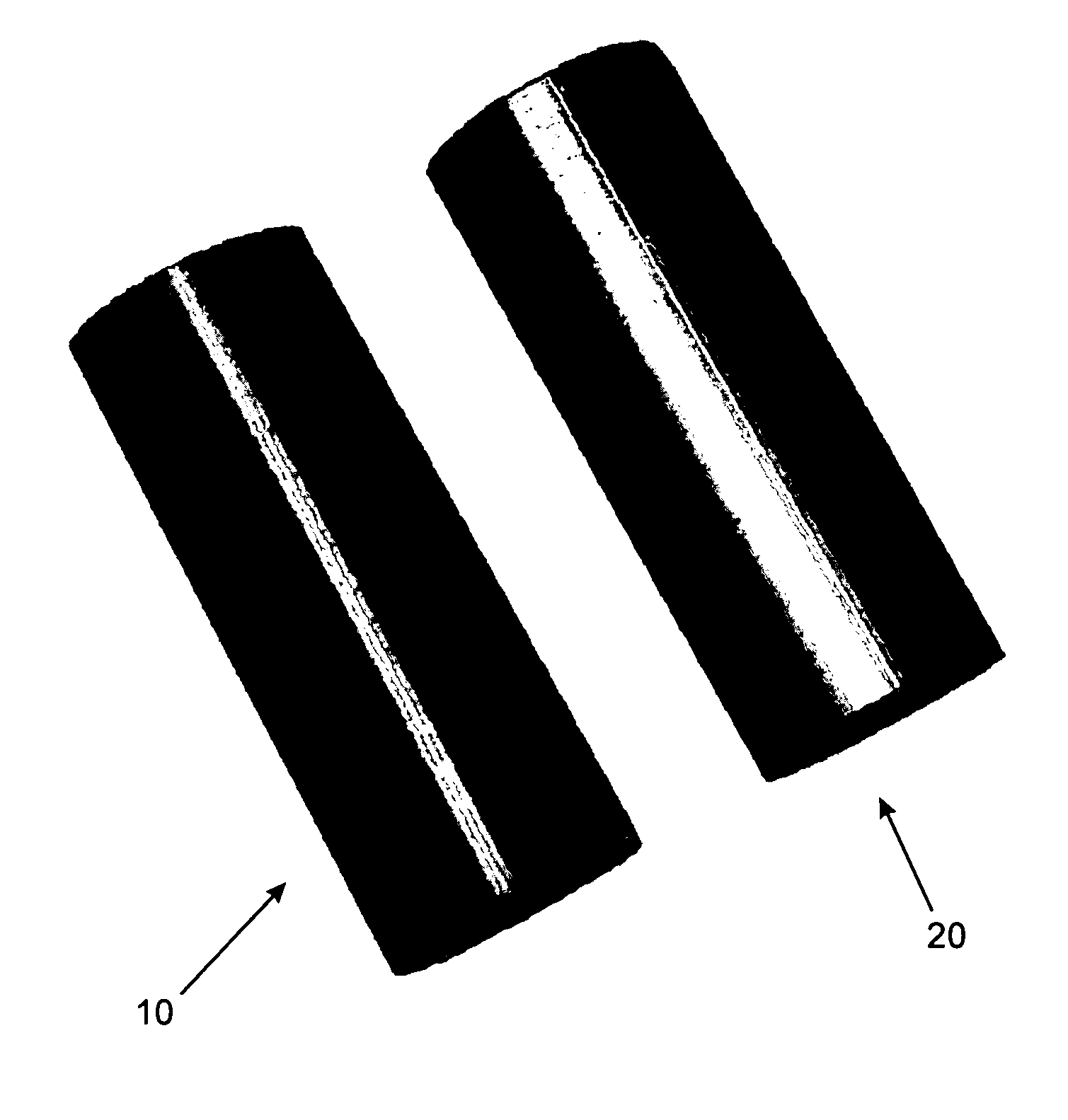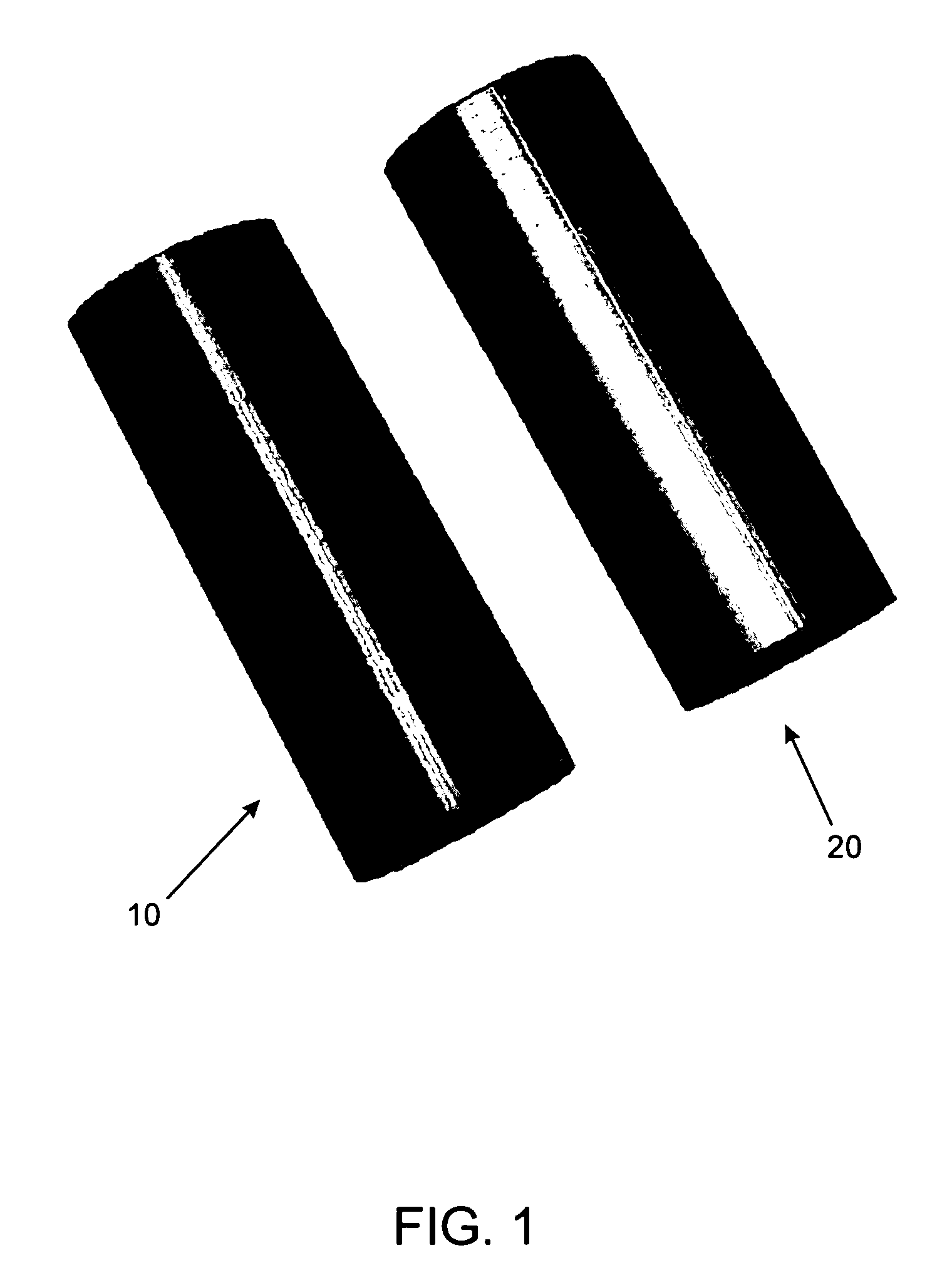Process for chemical etching of parts fabricated by stereolithography
a stereolithography and chemical etching technology, applied in the direction of liquid/solution decomposition chemical coating, electric/magnetic/electromagnetic heating, coating, etc., can solve the problems of poor surface wettability of sla resin and ineffective hf for sla resin
- Summary
- Abstract
- Description
- Claims
- Application Information
AI Technical Summary
Benefits of technology
Problems solved by technology
Method used
Image
Examples
example 1
[0037]
StepTemperatureTimeEtching80° C.10secPre-Activation80° F.3minActivation87° F.7minPost-Activation80° F.1 min30 secPlating (Cu-406)30° C.1 min30 sec
example 2
[0038]
StepTemperatureTimeEtching40° C.30secPre-Activation80° F.3minActivation87° F.7minPost-Activation80° F.1 min30 secPlating (Cu-406)30° C.1 min30 sec
example 3
[0039]
StepTemperatureTimeEtching50° C.30secPre-Activation80° F.3minActivation87° F.7minPost-Activation80° F.1 min30 secPlating (Cu-406)30° C.1 min30 sec
PUM
| Property | Measurement | Unit |
|---|---|---|
| temperature | aaaaa | aaaaa |
| temperature | aaaaa | aaaaa |
| temperature | aaaaa | aaaaa |
Abstract
Description
Claims
Application Information
 Login to View More
Login to View More - R&D
- Intellectual Property
- Life Sciences
- Materials
- Tech Scout
- Unparalleled Data Quality
- Higher Quality Content
- 60% Fewer Hallucinations
Browse by: Latest US Patents, China's latest patents, Technical Efficacy Thesaurus, Application Domain, Technology Topic, Popular Technical Reports.
© 2025 PatSnap. All rights reserved.Legal|Privacy policy|Modern Slavery Act Transparency Statement|Sitemap|About US| Contact US: help@patsnap.com


